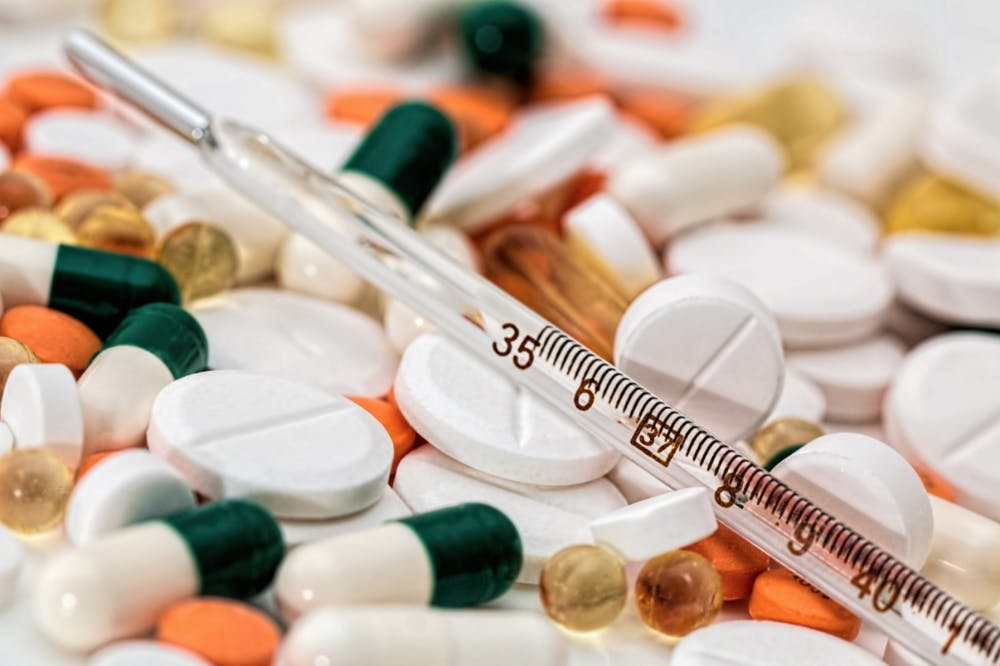In February 2004, the anti-cancer drug Alimta, developed by late chemistry Professor Emeritus Edward Taylor in collaboration with pharmaceutical giant Eli Lilly, was approved by the FDA for the treatment of several forms of deadly lung cancer.
Fourteen years later, not only is Alimta still saving lives, but the University continues to reap the benefits of Taylor’s work. The U.S. patent on Alimta gave the University nearly $524 million in royalties, some of which contributed to the construction of Frick Chemistry Laboratory on Washington Road that has housed the department of chemistry since 2010. Moreover, all third-year chemistry graduate students at the University now receive a fully funded fellowship sponsored by Taylor.
“Collaboration between academia and industry is really a win-win situation for both sides,” Dean for Research Pablo Debenedetti said, recounting the story of Alimta.
He explained that while the driving force for faculty was exposure to new questions that combine scientific interest with real-world impact, companies received access to campus recruitment and the ability to partner on government grants.
Debenedetti said that the University has had a long history of collaborative research with industry, particularly in the life sciences. “Geographically, the proximity of pharmaceutical industries and the University in New Jersey make partnerships between the two feasible,” he explained.
In 2006, the University opened the Merck Center for Catalysis with funding from pharmaceutical company Merck. The facility features a robotic system that sets up and monitors thousands of reactions, allowing researchers to identify biologically active compounds in a high-throughput fashion, Debenedetti said.
“The Center for Catalysis has enabled researchers in the chemistry department to partner with Merck on life-saving research,” Debenedetti said.
In the chemistry department, Paul Chirik’s lab discovered a new method to track metabolites with radioactive labeling, while David MacMillan’s group has been using light as a knob to influence chemical reactions, and Abigail Doyle’s group has developed artificial intelligence software to predict the yield of chemical reactions, he said.

Chirik, MacMillan, and Doyle could not be reached for comment at the time of publication.
In 2015, the chemistry department partnered with pharmaceutical company Bristol-Myers Squibb to establish the Center for Molecular Synthesis as a facility to conduct cutting-edge synthetic chemistry.
“The Center will encourage out-of-the-box research and robust conversation between scientists from both the University and Bristol-Myers Squibb,” Debenedetti said.
There are many promising collaborations still in the pipeline, Debenedetti said. A proposal to explore molecular based treatments for acne, developed by professor chemistry Mohammad Seyedsayamdost in partnership with pharmaceutical firm Johnson & Johnson, recently won the Innovation Fund for Industrial Collaborations sponsored by the Office of the Dean for Research, Debenedetti explained.

Seyedsayamdost could not be reached for comment at the time of publication.
Across the road from the chemistry department, the molecular biology department in Thomas Laboratory is also home to alliances between University scientists and researchers in pharmaceutical companies. Most recently, molecular biology professor Yibin Kang has worked with pharmaceutical corporation Amgen to develop an antibody that inhibits specific tumor cells and sensitizes bone metastases to the action of chemotherapy.
“University labs are good at doing research with long time commitments of four to five years, using advanced platforms and models that companies might not have the expertise for,” Kang said.
However, though University laboratories are good at discovering new pathways for therapeutics, companies are often better at making and improving biologically active compounds, Kang explained.
“We have different motivations,” Kang stated. “While universities prioritize education and the spirit of exploration, the industry is focused on product development.”
However, he emphasized that the real beneficiaries of collaborations between academia and the industry are patients.
The development of 15D11, the antibody against bone metastasis discovered by Kang’s group and researchers at Amgen, took over a decade of research, Kang said.
His previous work on breast cancer metastasis had implicated a cellular signaling pathway, Notch, in disease progress. The work was noticed by researchers at Merck, who approached Kang a decade ago to test a potential therapeutic compound that would impact the pathway.
Studies in mouse models conducted by the Kang lab demonstrated that Merck’s compound was toxic because it targets several receptors in the gastrointestinal tract rather than a specific target. A few years later, having noticed this work at a scientific conference, scientists from Amgen reached out to Kang to test an antibody that they suspected could confer both the required inhibition and specificity.
Four years of experimentation later, 15D11 was found to be an efficient drug for the treatment of breast cancer metastasis to the bone when combined with chemotherapy by blocking cancer cells’ defense mechanisms against chemotherapy, Kang said.
The next step is to move to clinical trials in patients, Kang stated, a reminder of the many thousands of lives saved by collaborative research between academia and pharmaceutical companies in the life sciences. These partnerships are beneficial not only to universities, whose scientists are exposed to real-world problems, or industry, that gains cutting-edge academic expertise, but to the broader society in the form of life-saving drugs.








